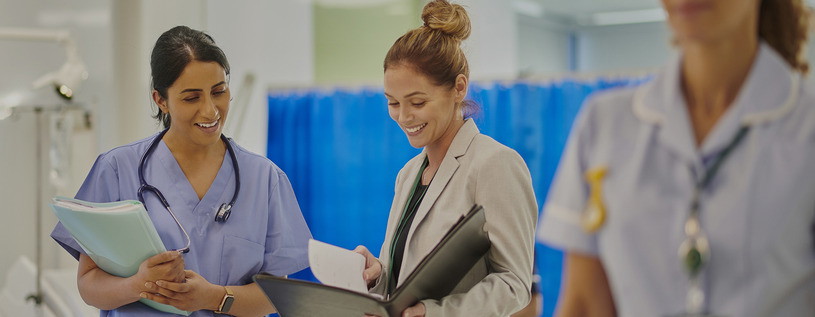Ideal Practices in Medical Management for Improving Effectiveness and Decreasing Costs
In the ever-evolving landscape of health care, the pursuit of finest techniques in clinical management is paramount for improving efficiency and suppressing expenditures. By incorporating sophisticated modern technologies such as digital health records and telemedicine, medical care suppliers can improve procedures and boost patient care.
Leveraging Advanced Modern Technology
In today's rapidly progressing medical care landscape, leveraging innovative innovation is no longer optional however necessary for reliable medical management. The integration of electronic services into healthcare systems has transformed the means facilities operate, streamlining processes and enhancing person treatment. Electronic Health Records (EHRs) are critical, offering thorough patient data that can be accessed immediately by accredited employees, thus reducing redundancy and minimizing errors. By streamlining patient info, EHRs get rid of the demand for cumbersome documents and facilitate seamless interaction amongst health care providers.
Telemedicine is an additional technological advancement that has actually revolutionized patient communication. It uses ease for both patients and healthcare specialists by allowing remote assessments, which can decrease the demand for in-person sees and enhance appointment organizing. Additionally, telehealth systems can prolong medical care access to country or underserved areas, bridging voids in treatment shipment.
Furthermore, making use of Artificial Intelligence (AI) and device discovering is coming to be significantly widespread in anticipating analytics, permitting very early detection of potential health and wellness problems and more enlightened decision-making. These technologies, when incorporated efficiently, can enhance analysis precision and individualize individual therapy strategies, eventually bring about enhanced healthcare outcomes and functional performance.
Optimizing Resource Allotment
By tactically handling sources such as workers, tools, and funds, health care facilities can dramatically enhance their operational efficiency, improve client outcomes, and minimize unneeded expenses. The first action in maximizing resource allowance includes conducting a thorough evaluation of present properties and recognizing areas where sources may be underutilized or overextended.
Focusing on source allotment based upon patient demands and solution demands is vital. This includes lining up resources with high-demand areas, such as emergency situation care or specialized therapies, to make sure prompt and efficient individual care. Applying flexible staffing models can additionally optimize labor sources by changing workers allotment in response to varying person volumes. Additionally, welcoming telemedicine and various other technological options can reduce physical resource constraints by offering alternate methods for patient-provider communications.
Financial resources need to be meticulously kept track of and assigned with strategic insight to sustain both short-term operational requirements and long-term institutional goals. This consists of investing in training programs that improve team proficiencies and adopting energy-efficient techniques that lower operational expenses (medical administration). Inevitably, an enhanced source allowance approach promotes a lasting medical care atmosphere that is responsive, efficient, and monetarily sensible
Streamlining Workflow Processes
When health care facilities purpose to enhance functional efficiency, improving operations processes ends up being a pivotal emphasis. Efficient process lessen redundancy, remove unneeded actions, and boost control amongst health care professionals. This approach not only speeds up service delivery yet also boosts the high quality of individual treatment.

Following, technology combination plays a considerable duty in streamlining workflows. Carrying out electronic wellness records (EHRs) and computerized physician order entry (CPOE) systems minimizes documentation, decreases human mistake, and makes certain info is accessible to all relevant personnel. Additionally, leveraging telemedicine platforms can streamline patient consultations and follow-ups, decreasing the pressure on physical framework.

Eventually, streamlined operations lead to set you back decreases and enhanced patient fulfillment, cultivating a much more lasting healthcare atmosphere.
Enhancing Information Monitoring
Building upon streamlined workflows, maximizing information administration ends up being a vital component ahead of time medical care management. article source Effective data management systems are vital for preserving exact client documents, boosting decision-making, and ensuring conformity with regulatory standards. By carrying out robust information management solutions, medical care centers can boost the quality of client treatment while concurrently decreasing functional costs.
One secret element of boosting data administration is the integration of sophisticated electronic wellness record (EHR) systems. These systems help with the seamless exchange of person information throughout different departments, minimizing duplication of tests and lessening errors. A properly designed EHR system supports information analytics, making it possible for doctor to recognize trends and make informed decisions concerning patient treatment.
Additionally, securing patient information is critical. Taking on comprehensive cybersecurity procedures, including file encryption and regular audits, guarantees the stability and confidentiality of delicate details. This not just protects people yet likewise maintains the organization's reputation.
Spending in team training is one more important element. Educating healthcare professionals on data administration practices enhances their ability to efficiently use technology, causing boosted individual outcomes. Finally, enhancing information administration with innovative modern technology and comprehensive training is important for accomplishing effectiveness and price reduction in clinical administration.
Fostering Collaborative Interaction
An essential part ahead of time clinical administration is promoting collaborative interaction amongst healthcare experts. Effective interaction is paramount for making sure smooth person treatment, maximizing treatment outcomes, and minimizing errors. By encouraging open dialogue and coordination across multidisciplinary teams, medical care companies can improve their operational efficiency and lower unnecessary expenses.
Central to this technique is the integration of interaction modern technologies such as electronic health records (EHRs) and secure messaging platforms, which assist in the fast exchange of crucial patient information. These tools make it possible for medical care providers to gain access to and share data in real time, ensuring that all staff member are educated and lined up in their decision-making processes. Routine team conferences and interdisciplinary rounds can further promote a society of cooperation and accountability.
Educating programs concentrated on boosting interaction skills are likewise essential. These programs can help staff develop the capability to share details clearly and listen proactively, therefore reducing misunderstandings and promoting a helpful workplace. you could try here On top of that, embracing standardized communication methods, such as SBAR (Situation, History, Assessment, Recommendation), can improve the exchange of details, making certain that vital information are conveyed succinctly and successfully. Eventually, fostering collaborative interaction results in improved healthcare distribution and cost financial savings (medical administration).

Conclusion
Integrating innovative modern technology, such as electronic wellness documents and telemedicine, together with maximized source allocation and streamlined process procedures, is essential for improving performance in medical management. Reliable information administration and fostering collective communication among i loved this medical care teams are critical for decreasing redundancies and enhancing care quality. By prioritizing preventative treatment and participating in quality renovation initiatives, healthcare organizations can accomplish considerable cost financial savings and boosted person outcomes, consequently making sure sustainable healthcare delivery in a progressively complex environment.